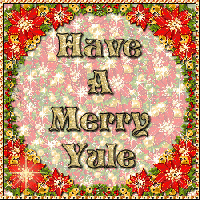Wheel of the Year Circle (2)
Launch gallery slideshow

| Swap Coordinator: | LadyT (contact) |
| Swap categories: | Seasonal |
| Number of people in swap: | 6 |
| Location: | Other |
| Type: | None |
| Last day to signup/drop: | November 23, 2008 |
| Date items must be sent by: | December 7, 2008 |
| Number of swap partners: | 1 |
| Description: | |
|
The Earth, like all living things, has Her own rhythms and cycles. The changing seasons of the Wheel of the Year hold a foundational rhythm for life on planet Earth. The Wheel flows through an 8-point cycle: *stillness and anticipation of deep Winter * quickening and first stirring of Life * springing of Life * passionate flowering * ripening * ebb of the growing impulse * harvest * storing & preparation for Winter. 8 holidays (Sabbats) honor these sacred rhythms of the Wheel of Year. These sacred days are traditionally celebrated through sacred rites and festivals. When we celebrate these holidays, we join in partnership with the Earth, lending our energies to the turning of the Wheel. The cycle of these 8 stages of the Wheel of the Year are found again and again in the many rhythms of our lives: *in our journey from birth to death * in the process of any endeavor from start to finish *in the 8 phases of the waxing and waning moon *in the daily movement of the sun * in inhalation and exhalation of each breath By consciously tuning to the Wheel of the Year, we can tune deeply to this foundational cycle of life, and learn to work with the energies of Nature, rather than struggling against the natural currents of life on Mother Earth. This an ELECTRONIC & INTERNATIONAL SWAP - As each Sabbat occurs (eight times a year), you will email ME one (1) corresponding ritual that you have either written yourself or that you have participated in and like. I will then forward it to all of the swappers - for all to see, share and get ideas for their own practices. This is really about sharing ideas on how you live your spiritual life! You WILL be assigned one (1) swap partner - because its the way this system works - so please feel free to send that partner a little token, talisman or something for their altar that corresponds with your sent ritual - THIS WOULD CONSTITUTE a HEART but not necessary. So if you sign up for this SWAP - you must agree to not badly rate your partner if you DO NOT receive anything and by the same token - give them a heart for doing so. You will have to re-sign up for each Sabbat - as there is no way (that I know of) to re-assign partners (so it makes things exciting and everyone gets a cultural exchange) and dates for each one without starting over. I will make sure to send you an email inviting you each time. RULES (even though I hate them) Rating of 4.5 or better, with NO no sends in the past six months. Go ahead and message me if you’ve been rated unfairly at any point or have a good reason for your lower rating or the no sends, and we’ll talk. I’m certainly open to listening - as I understand LIFE HAPPENS! Newbies allowed, but with filled out profiles please by the time you are signing up. Communication is key. If you’re going to be late with the swap, let your partner know. If your partner tells you he/she is going to be late, and keeps up the communication, give him/her a break. Sometimes things come up that just can’t be helped. Life happens! I reserve the right to ban anyone that I think might be a problem. This means people that I've noticed have a history of rating unfairly, nastiness, etc. I believe in playing nice & fairly. ENJOY, Have FUN - after-all, this is a HOBBY . . hobbies are supposed to bring you joy & happiness!!!!!!!! YULE will be our second location on the wheel. Yule is a solar festival and one of the Minor Sabbats. This is when the Goddess gives birth to the God. The Sun represents the God reborn. Fires are lit to welcome him. The ancient Pagans had rituals to hasten the end of winter and bring in the spring when nature’s bounty would, again, prevail. The day is a reminder that death isn’t final; there will be rebirth. A Festival of Light: Many cultures have winter festivals that are in fact celebrations of light. In addition to Christmas, there's Hannukah with its brightly lit menorahs, Kwanzaa candles, and any number of other holidays. The holiday called Yule takes place on the day of the winter solstice, around December 21. On that day (or close to it), an amazing thing happens in the sky. The earth's axis tilts away from the sun in the Northern Hemisphere, and the sun reaches at its greatest distance from the equatorial plane. As a festival of the Sun, the most important part of any Yule celebration is light -- candles, bonfires, and more. Origins of Yule: In the Northern hemisphere, the winter solstice has been celebrated for millenia. The Norse peoples viewed it as a time for much feasting, merrymaking, and, if the Icelandic sagas are to be believed, a time of sacrifice as well. Traditional customs such as the Yule log, the decorated tree, and wassailing can all be traced back to Norse origins. Celtic Celebrations of Winter: The Celts of the British Isles celebrated this midwinter holiday as well. Although little is known about the specifics of what they did, many traditions persist. According to the writings of Julius Caesar, this is the time of year in which Druid priests sacrificed a white bull and gathered mistletoe in celebration. Roman Saturnalia: Few cultures knew how to party like the Romans. Saturnalia was a festival of general merrymaking and debauchery held around the time of the winter solstice. This week-long party was held in honor of the god Saturn, and involved sacrifices, gift-giving, special privileges for slaves, and a lot of feasting. Although this holiday was partly about giving presents, more importantly, it was to honor an agricultural god. Welcoming the Sun Through the Ages: Four thousand years ago, the Ancient Egyptians took the time to celebrate the daily rebirth of Horus - the god of the Sun. As their culture flourished and spread throughout Mesopotamia, other civilizations decided to get in on the sun-welcoming action. They found that things went really well... until the weather got cooler, and crops began to die. Each year, this cycle of birth, death and rebirth took place, and they began to realize that every year after a period of cold and darkness, the Sun did indeed return. Winter festivals were also common in Greece and Rome, as well as in the British Isles. When a new religion called Christianity popped up, the new hierarchy had trouble converting the Pagans, and as such, folks didn't want to give up their old holidays. Christian churches were built on old Pagan worship sites, and Pagan symbols were incorporated into the symbolism of Christianity. Within a few centuries, the Christians had everyone worshipping a new holiday celebrated on December 25. In some traditions of Wicca and Paganism, the Yule celebration comes from the Celtic legend of the battle between the young Oak King and the Holly King. The Oak King, representing the light of the new year, tries each year to usurp the old Holly King, who is the symbol of darkness. Re-enactment of the battle is popular in some Wiccan rituals. | |
Discussion
Leave a Comment
You must be logged in to leave a comment. Click here to log in.
- Info:
- Home
- |
- About
- |
- Forum Rules
- |
- Terms of Use
- |
- Press
- |
- Advertising
- |
- Blog
- |
- Graphics & Stuff
- Help:
- New User Info
- |
- FAQ
- |
- Group Info
- |
- Glossary
- |
- Forums
- |
- |
- Contact Admin

